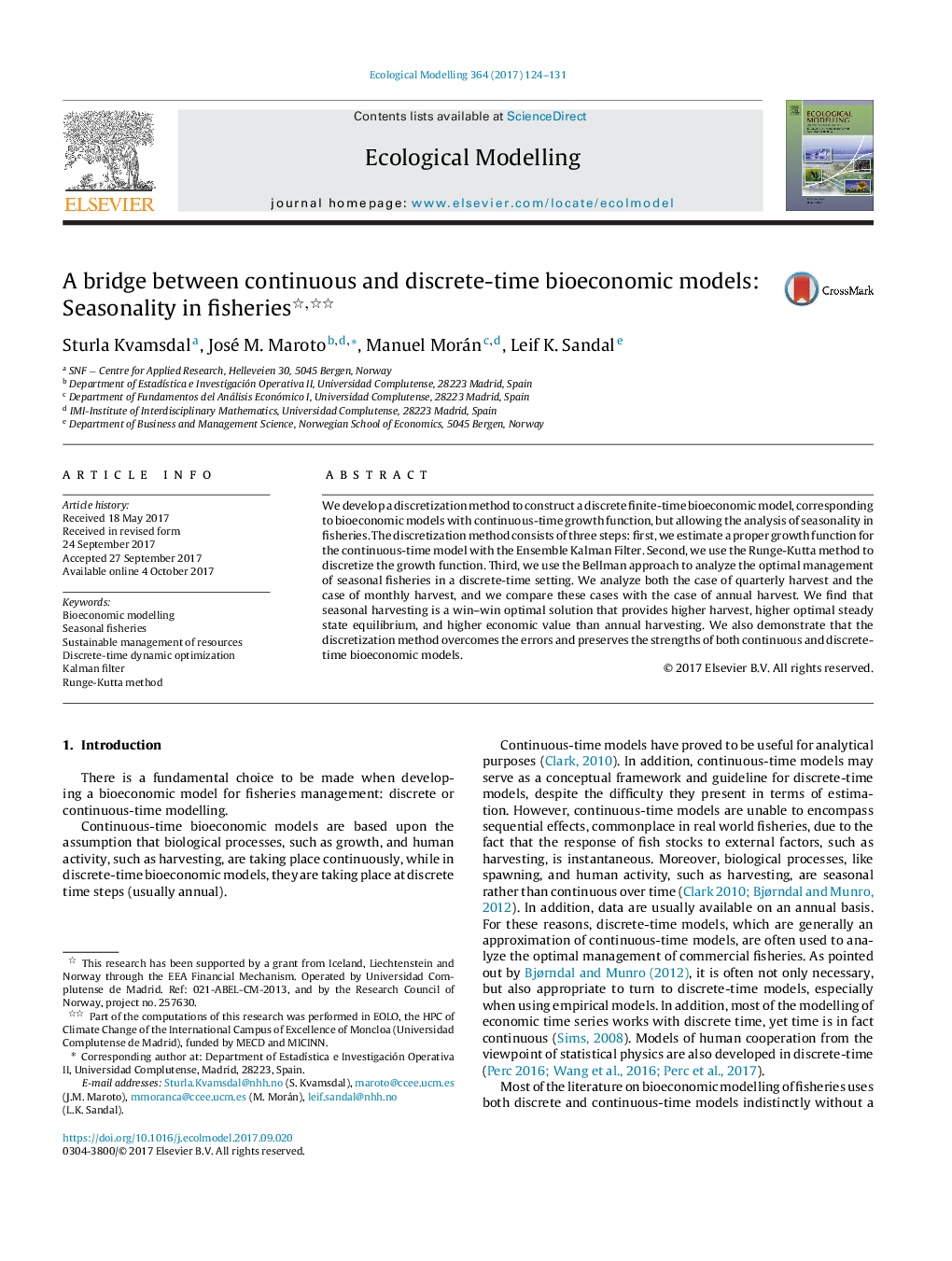| Article ID | Journal | Published Year | Pages | File Type |
|---|---|---|---|---|
| 5741987 | Ecological Modelling | 2017 | 8 Pages |
â¢A discretization method is developed to construct a discrete-time bioeconomic model.â¢The method allows us to build a bridge between continuous and discrete models.â¢The method overcomes the errors and preserves the strengths of both approaches.â¢The discrete-time model allows us to analyze seasonality in fisheries.
We develop a discretization method to construct a discrete finite-time bioeconomic model, corresponding to bioeconomic models with continuous-time growth function, but allowing the analysis of seasonality in fisheries. The discretization method consists of three steps: first, we estimate a proper growth function for the continuous-time model with the Ensemble Kalman Filter. Second, we use the Runge-Kutta method to discretize the growth function. Third, we use the Bellman approach to analyze the optimal management of seasonal fisheries in a discrete-time setting. We analyze both the case of quarterly harvest and the case of monthly harvest, and we compare these cases with the case of annual harvest. We find that seasonal harvesting is a win-win optimal solution that provides higher harvest, higher optimal steady state equilibrium, and higher economic value than annual harvesting. We also demonstrate that the discretization method overcomes the errors and preserves the strengths of both continuous and discrete-time bioeconomic models.
